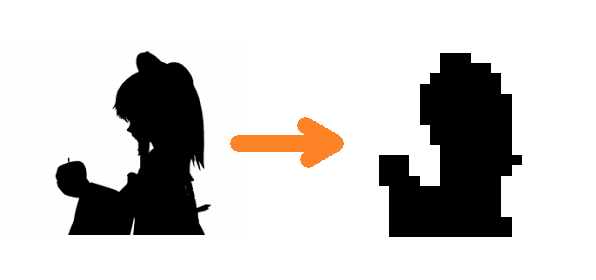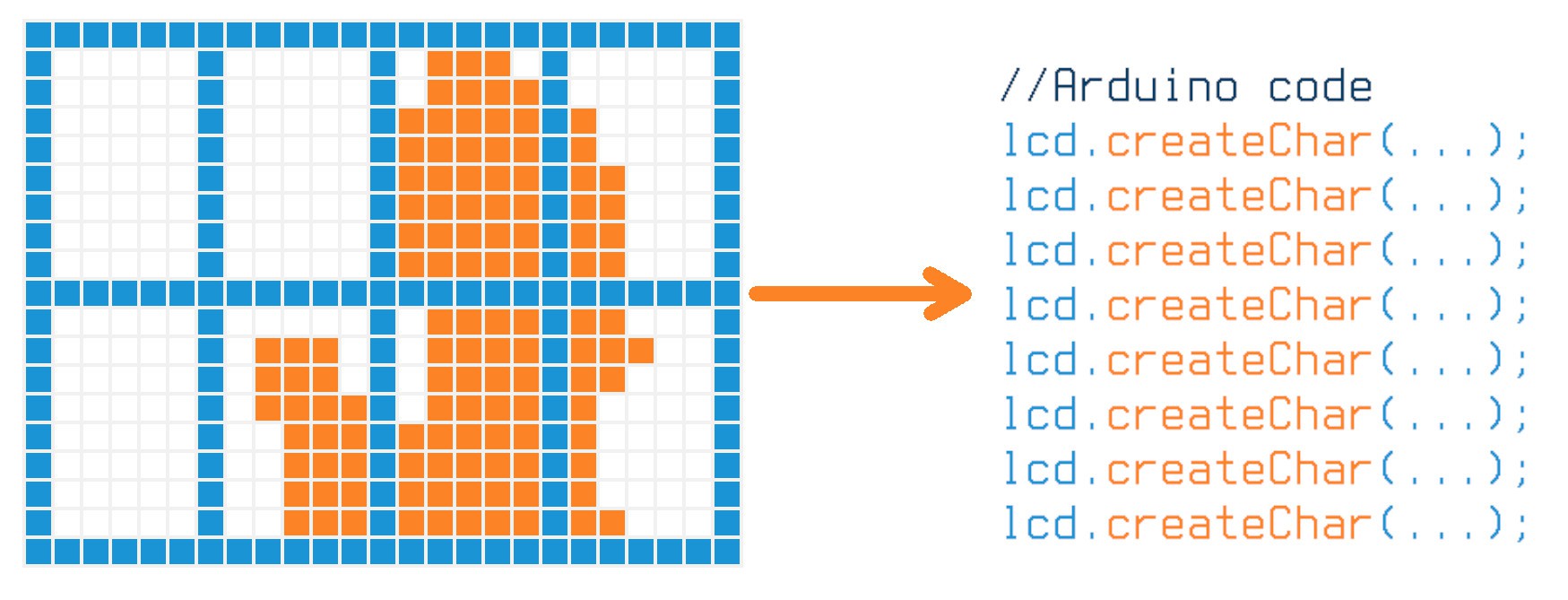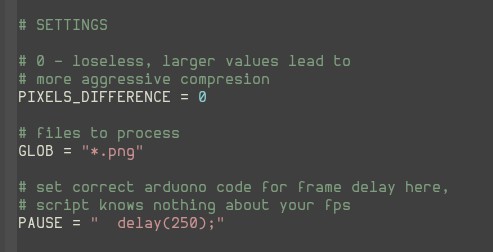A typical 1602 display features a 16x2 character matrix, and each character fits 5x8 pixels rectangle. There is also a gap between characters about 1 “blind” pixel, that is to say these margins have no pixels. All the character glyphs are hard-coded in the display. But you may upload up to 8 custom character bitmaps. I used this trick in another project to make a Space Invaders game.
As for video stream, eight 5x8 characters give us a 20x16 graphical viewport. Taking into account blind gaps between characters gives us a 23x17 viewport with “dead pixels” lattice. We should consider these blind zones in our further calculations to avoid video deformation.

Is it possible to push Bad Apple into an Arduino UNO with 32Kb Flash? Each of 8 characters is represented by a 5x8 bitmap, that is to say 8x5x8 = 320 bits = 40 bytes per frame. 32 Kb gives you space for about 800 frames (in fact, you don't need to redraw unchanged characters, so this number depends on video and frame rate). Obviously you should decrease frame rate and implement a better compression algorithm. When I finished this project I found out that Ian Ward has been working on a similar idea recently. His outstanding implementation is hardware-only, without any microcontroller. And yes, it really fits 32Kb! Of course, with quality losses. So technically it is possible with aggressive and lossy compression algorithms.
Is it possible to increase resolution? It depends on your particular stream and how much quality loss you are ready to tolerate. This implementation provides a larger viewport by rendering nearly black characters black and nearly white characters white. It also uses other smart and aggressive compression techniques. However, if you want a lossless stream, 8 custom characters is your limit.
Will it run DOOM? Well, maybe. Certainly not on Arduino UNO. If you grab some single-board computer which is able to run DOOM and make it convert video frames to 23x17 monochrome bitmaps… And adjust contrast so that gameplay would be more or less distinctive… But I doubt it will be playable or even recognizable. Maybe I’ll give it a try one day.
Hope you enjoy this project!





